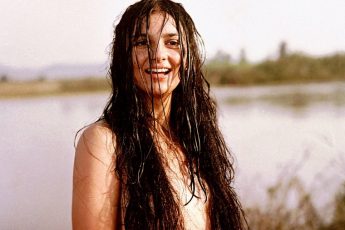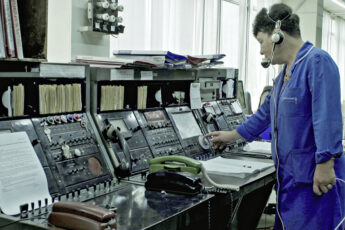
Bill Evans once said the following about a Japanese painting technique that he likened to the art of jazz improvisation:
These artists must practice a particular discipline, that of allowing the idea to express itself in communication with their hands in such a direct way that deliberation cannot interfere.
The resulting pictures lack the complex composition and textures of ordinary painting, but it is said that those who see well find something captured that escapes explanation.1
The very same can be said about the art of documentary. Can there be a meaningful montage of shots that are themselves products of chance? This question seems to be particularly pertinent in documentaries such as Anna Eborn’s Transnistra, where the spontaneity with which life itself is unfolding on screen defies every interpretation.
When a character from Chekhov’s Three Sisters asks, “But what is the meaning of it?,” another responds, “Look, it is snowing,” continuing: “What is the meaning of that?”2 Watching Transnistra is, in a sense, a simple contemplative experience that can be compared to that of watching the snow fall, or witnessing any other spectacular (or not too spectacular) way in which life is happening. Just as improvisation in music, documentary cinema of the kind Anna Eborn is making is the most unintellectual kind of cinema there is – cinema that, instead of cutting and composing things, lets them expand and explode.
The director’s role is to make this particular type of expansion, this particular spectacle of life, seen. You may, probably, compare this job to that of a zoologist studying species in the wild with a set of tools and techniques that allow him to record what he sees in a way that make his observations relevant in the general scientific context. You might ask what is so unintellectual about that? While this type of activity might contribute to science, at its core lies something closer to the common curiosity of a child, than to the scientific preciseness and the use of what we call intellect. There is no trace of either conducting an experiment, or of scientific abstract thinking (so, nothing that mimics either applied or theoretical research) in the way a human eye stops at an object, becomes interested in it, develops a desire to follow and immortalize it. Rather, this process reminds us of a kind of passive-active meditative experience of “falling in love with an idea and letting it guide you” that David Lynch describes constantly in his writings and interviews.3 And that seems to precisely be the methodology of Anna Eborn’s cinematic researches, the difference being that she falls in love with a person and lets that person become her character and guide her into the world of her next film.
That is exactly how Transnistra was born. Driving in Transnistria one evening, Eborn was passing a gas station near which Tanya, the future protagonist of the film, was standing. Eborn stopped the car, introduced herself and asked Tanya if she wanted to take a ride with her. The next day the director met Tanya’s friends, all of them boys, and in a little while, started shooting. Hearing Anna Eborn describe her relationship with her “cast”, one can only note once again the emotional and sympathy-driven nature of her method: “They are the most important thing for me… I try to put as little pressure as possible on the characters, and whatever they are ready to give me, I cherish that, and I lift it, and I trust what we’re doing…”4These are, indeed, the words of a careful researcher, whose fidelity to the reality they witness is guided by a deep intuitive feeling. The kind of research Anna Eborn has done in Transnistra, following teenagers in an unrecognized post-Soviet country, is her way of penetrating the unknown habitat – to drive in the core of its life instead of reconstructing it in her mind as an artistic image. She stayed true to the sympathy that made possible a leap from a gas station to Tanya’s life, and the picture started to expand and develop on its own in front of her camera, in a way, well described by Evans, “allowing the idea to express itself in communication with their hands in such a direct way that deliberation cannot interfere”.
References
References
- 1Bill Evans. “Improvisation in Jazz”. https://www.sfjazz.org/onthecorner/bill-evans-kind-blue-liner-notes/. Accessed on 7th of March, 2020.
- 2Anton Chekhov. “Three Sisters”. https://www.ibiblio.org/eldritch/ac/sisters.htm. Accessed on 7th of March, 2020.
- 3David Lynch. Catching the Big Fish: Meditation, Consciousness, and Creativity. New York: Jeremy P. Tarcher/Penguin, 2006.
- 4Anna Eborn (Transnistra) – Big Screen Talk. https://www.youtube.com/watch?v=GkOMBJ6h7S8. Accessed on 7th of March, 2020.




Leave a Comment